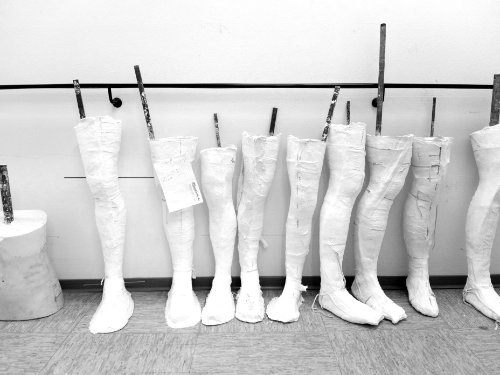Plaster of Paris (PoP) has been used as a building product for thousands of years. Its first use as a cast for injured limbs was a technique known as plâtre coulé that became popular in Europe at the beginning of 19th century.The technique involved pouring PoP around injured limbs encased in a constructed wooden frame. Due to the heavy weight of the construction the patient was largely confined to bed.
In 1839, Lafargue of Saint Emilion used fresh warm starch paste mixed with PoP powder over layers of linen strips. The dressing hardened much faster, reducing setting time down to six hours. In the 1850’s The Dutch military surgeon Anthonius Mathijsen, discovered that bandages soaked in water and PoP would become hard within minutes whilst providing sufficient immobilisation for injured limbs.
The rehabilitation of soldiers during the First World War saw physiotherapists and reconstruction aides become responsible for the application and removal of PoP, as well as the preparatory rubbing and rolling of plaster into the bandages. In the early 1930’s, the first commercially manufactured bandages became available in Germany. They were made by spreading plaster mixed with minute quantities of volatile liquids on soft cloth.
PoP is still used widely around the world as a cheap, non-irritating, and easy to apply technique for limb stabilisation. As quoted by AJ Steele in his article from 1893 on the use of plaster of Paris in orthopaedics,
The property of rapidly hardening when once wet, gives to plaster its value. Additionally it has merit in its cheapnesss and convenience; it is ever ready, is easily prepared, and simple in its application.
Description provided by Glenn Ruscoe of Australia
References:
Steele, AJ. 1893. Plaster-of-Paris in orthopedics. Transactions of the American Orthopedic Association. Accessed online at https://collections.nlm.nih.gov/bookviewer?PID=nlm:nlmuid-101694814-bk on 21 October 2021.

